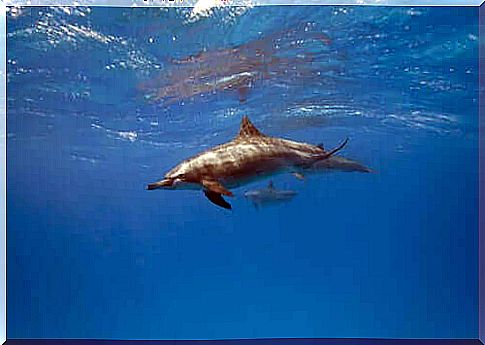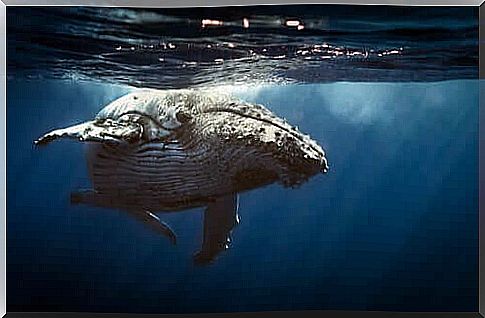Do Marine Mammals Sleep?

As in the case of humans, sleep and rest are essential for other animals. However, in the case of marine mammals, this process is a little different and, no doubt, surprising. Find out more about how marine mammals sleep below.
What marine mammals are there?
This group of animals comprises about 130 different species. All of them are more or less adapted to life in water : more hydrodynamic bodies and adapted limbs that facilitate movement, in most cases.
In general, marine mammals can be divided into three major groups:
- Order Sirenia or sirenians : in this group are, for example, manatees.
- Cetaceans : including whales, belugas and dolphins, among others.
- The caniforms, where we can find mammals that spend time on dry land. This includes seals, sea lions, walruses and even the polar bear.
What is sleep?
Answering this question is still difficult. Sleep, to begin with, is a physiological state and a necessity. It helps to balance some internal physical and psychic processes, which is why it is vitally important.

Sleep can be divided into five phases. During these phases, something happens: voluntary movement and muscle activity decrease until stopped. This implies that the muscles relax completely and brain activity is also altered. So how do marine mammals sleep?
How do marine mammals sleep?
To solve the movement problem, many species of marine mammals have resorted to so-called uni-hemispheric sleep. This long word means this: while one part of the brain is ‘sleeping’, the remaining hemisphere is responsible for being alert and active.
Note that this type of sleep is not unique to marine animals, as it also occurs in birds and specific species of reptiles. It has also been shown that the hemispheres are alternately turned on and off, so that both sides of the brain rest equally.
This mechanism allows, for example, marine mammals to continue breathing. While for the rest of mammals breathing is an involuntary process, in cetaceans it is completely voluntary. The solution for when they sleep is to turn to the active part of the brain to ensure that the breathing continues.

Uni-hemispheric sleep also allows marine mammals to swim and keep moving. In this way, in addition to maintaining your position, it helps with the task of rising to the surface to breathe. This phenomenon also helps them to maintain their body temperature.
Final fun facts about the sleep of marine mammals
Recently, a study unraveled part of the biology behind the sleep phenomenon in these animals, and the answer has to do with a component closely linked to the brain, called acetylcholine.
The results, published in a prestigious scientific journal, suggest that this compound is found in high concentrations on the “awakened” side of the brain, and hardly exists on the sleeping side.
As a final curiosity, we cannot fail to mention the dolphin’s sleep. Besides being one of the marine mammals with uni-hemispheric sleep, it is interesting to see that the dolphins sleep with one eye open, which alternates according to the hemisphere of the brain is active. This allows them to see what is happening around them and maintain a certain state of alert against any danger.








